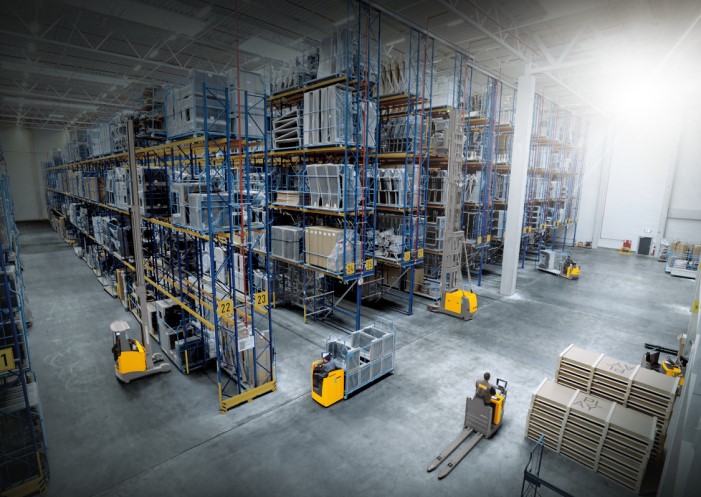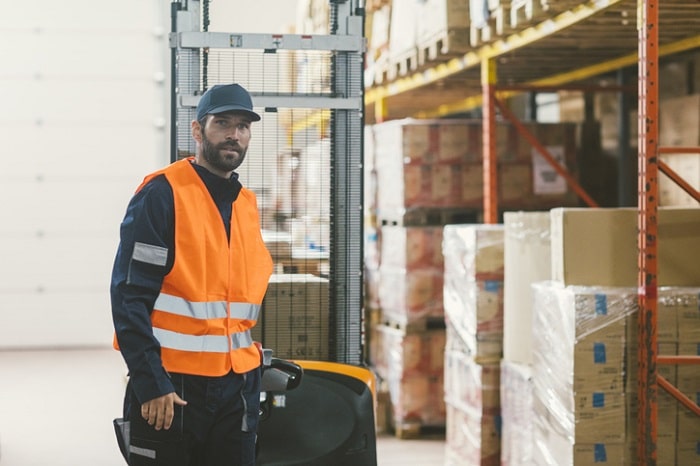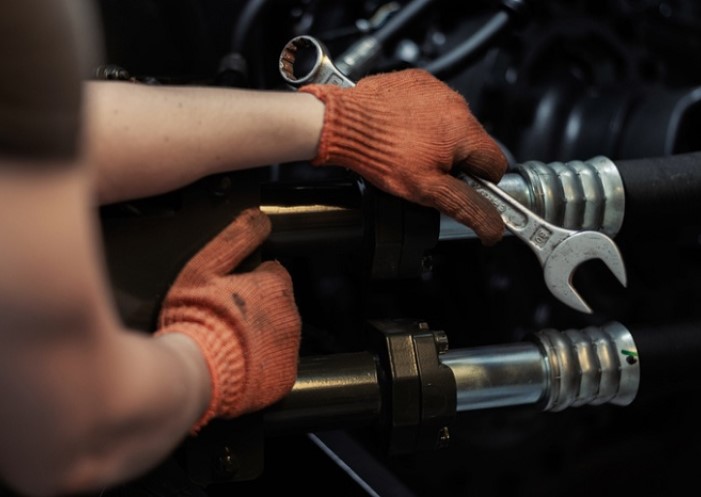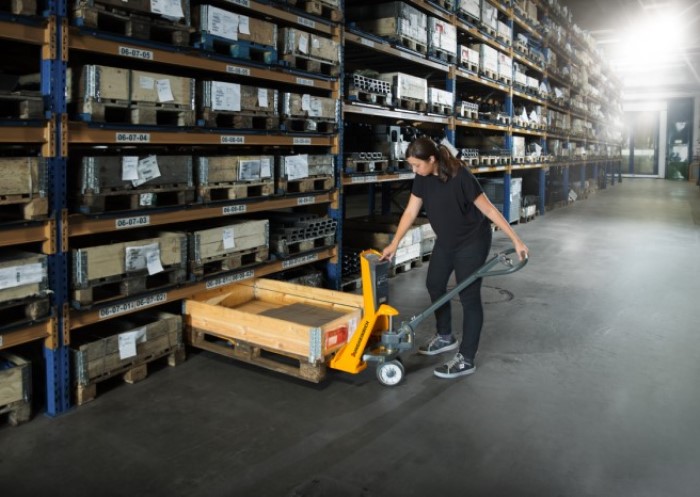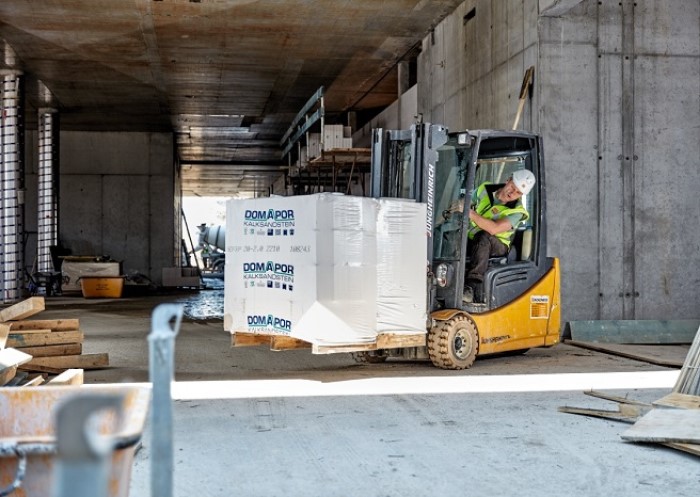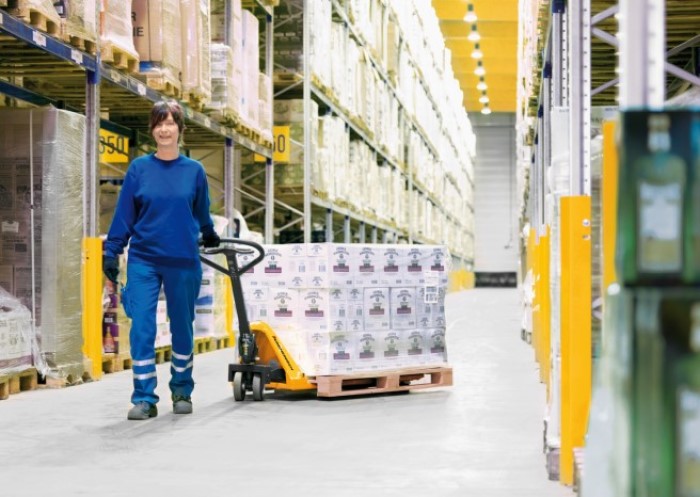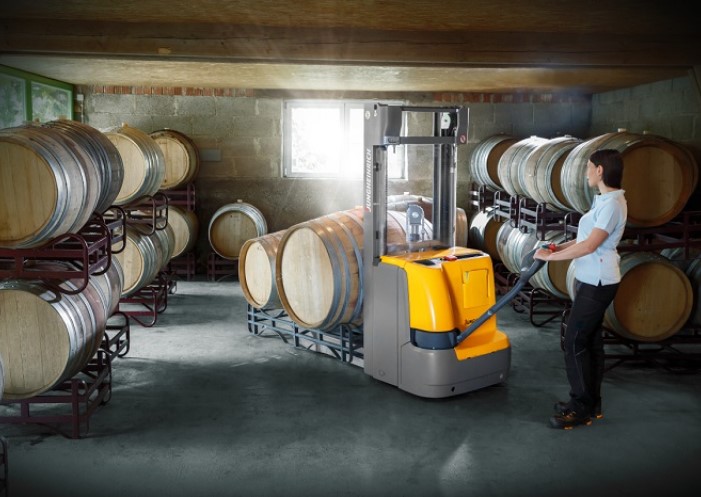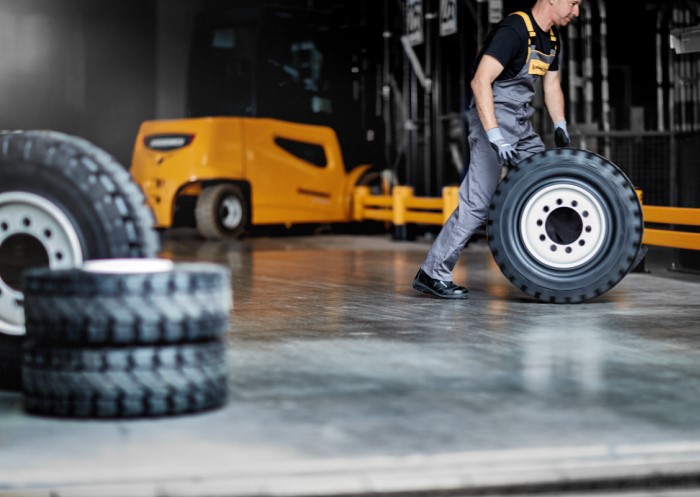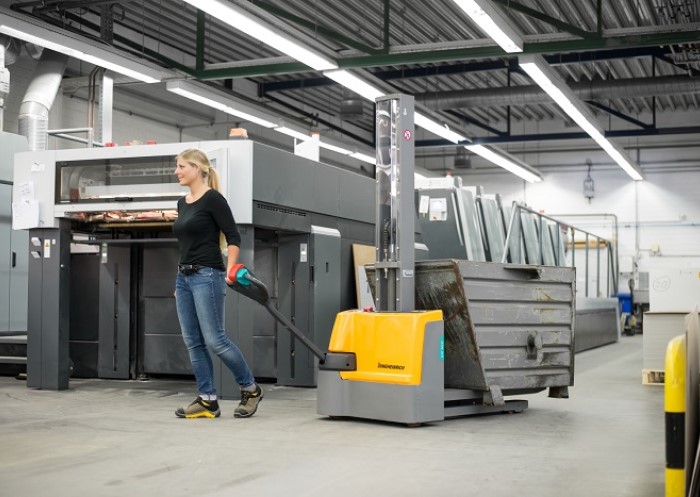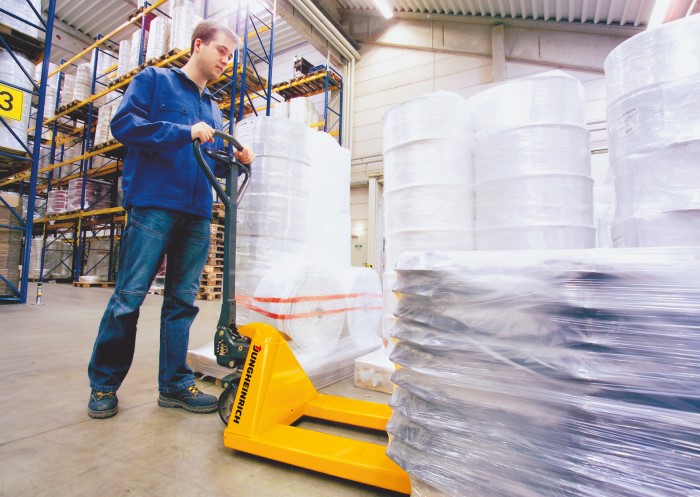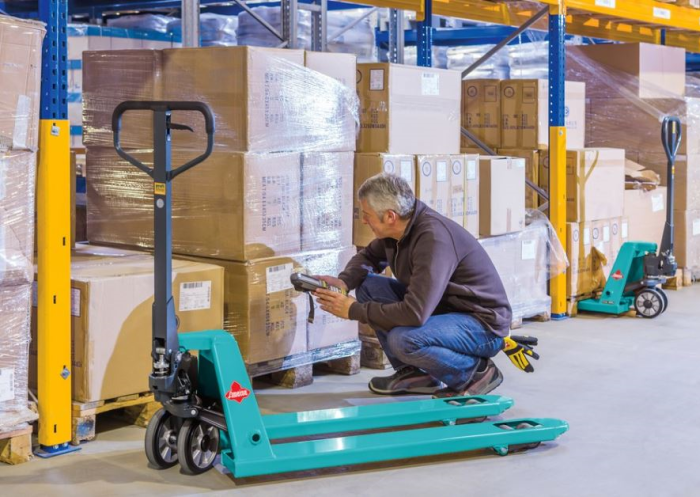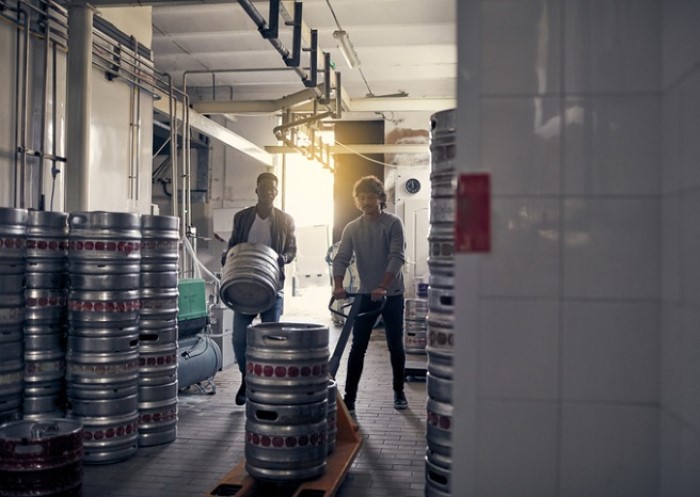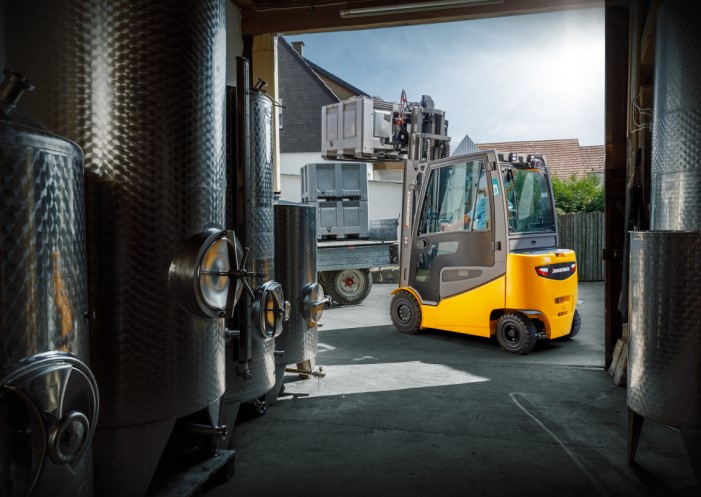Table of contents
Forklift and pallet truck dimensions play an important role in terms of optimal usage in different warehouse environments. It is therefore advisable to draw up a requirements profile before selecting a forklift or pallet truck for your business. The vehicle height, width, length as well as the tare weight are all important considerations.
Lift truck dimensions determine stability and safe cornering. In addition, the dimensions also determine driving suitability and how quickly and safely you can store or handle goods.
Forklift and pallet truck dimensions – vehicle height
The vehicle height is one of the most important dimensions of a forklift truck. If the truck is equipped with a mast, this is the highest point. Doors, gates or containers on the premises must be big enough to pass through without danger. Remember, the dimensions of the masts differ depending on the lifting height.
The vehicle height of a forklift or lift truck is determined either by the overhead guard (h6) or by the height of the retracted lift mast (h1). This determines which storage areas are suitable for driving without causing damage to the vehicle, load or building.
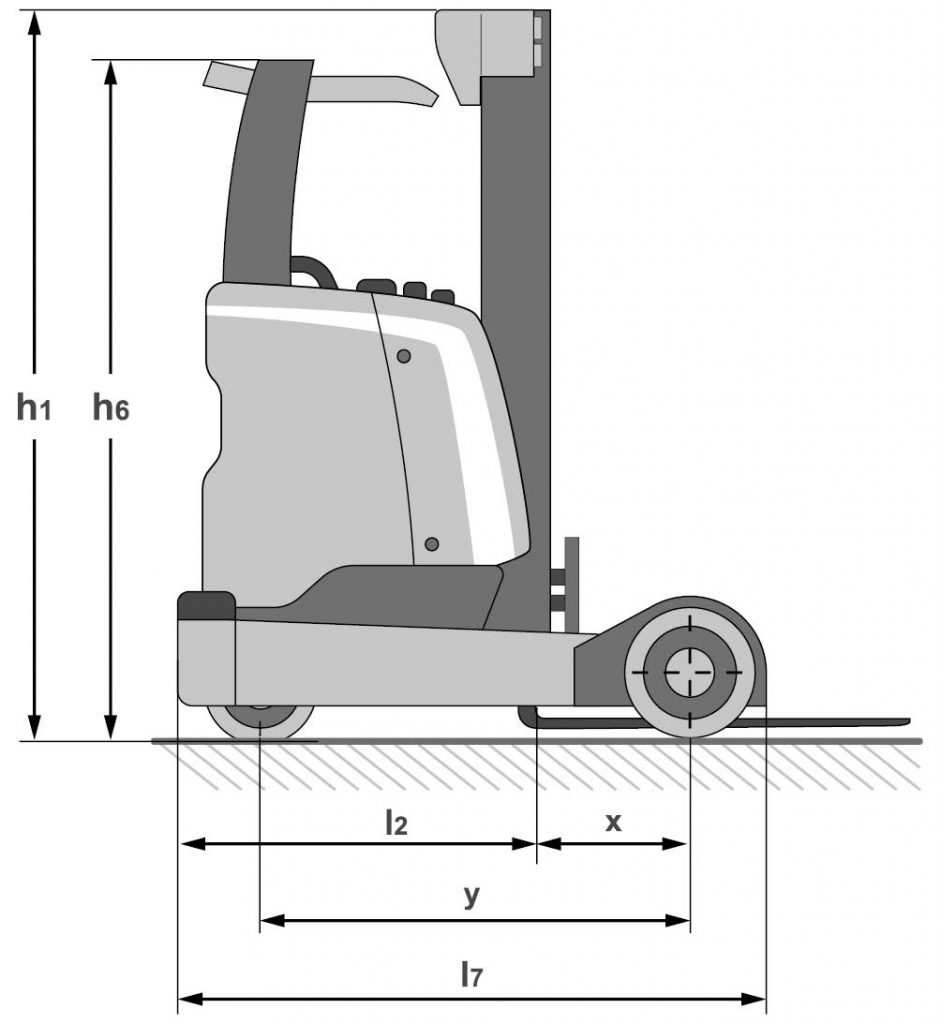
You should take note of the following features of your facility:
- Clearance heights of doors
- Clearance heights of hall doors
- Clearance heights of order picking shelves
- Aisles in racking systems
- Suspended ceiling components
- Goods lifts
We recommend that you check all areas of the warehouse or operation area where vehicles are used. Be sure to consider the vehicle height if you intend to use your forklift to serve trucks (standard internal height 2600mm), railway wagons (2000mm) or containers (door height 2280mm-2585mm).
In everyday operation, it is important to know the maximum height to which your goods can be moved. For this reason, the lifting height (h3) is important. The pallet feet are not always at the same height as the fork rest, but hang below it when loading, so a greater lifting height is required. The height of the lift mast (h4), known as the extended headroom, is important if work is carried out at height.
It is also important that forklifts or pallet trucks have a so-called free lift (h2). This is between 0 and 150 mm. This allows pallets to be transported horizontally in a slightly raised position. The free lift also prevents the forks from dragging on the ground during travel. Special features can include a large free lift from 1,000 mm. This may be necessary when stacking in containers or if you have to drive through low gates when carrying a load.
Ground clearance of industrial trucks
The dimensions of pallet trucks should ensure sufficient ground clearance in everyday work. Ground clearance is mainly determined by the tyre size of the vehicle. If the dimension is too small, even slight unevenness on the ground can cause the truck to touch down. Wheel-assisted forklifts, for example, have a relatively low ground clearance.
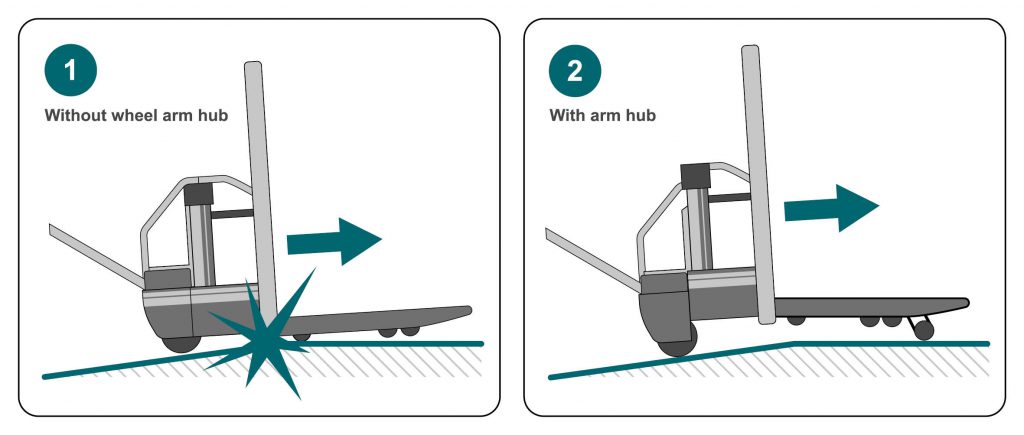
Make sure that sloping areas in your working environment do not have an unfavourable angle and are between 8 and 12.5˚. This way, they do not become an obstacle for the dock leveller. With regard to the angle of inclination and the ground clearance of your forklift truck, you should always accurately calculate the area of the transition between slope and level. Some forklifts or lift trucks have a so-called ‘ramp lift’ to compensate for steeper slopes.
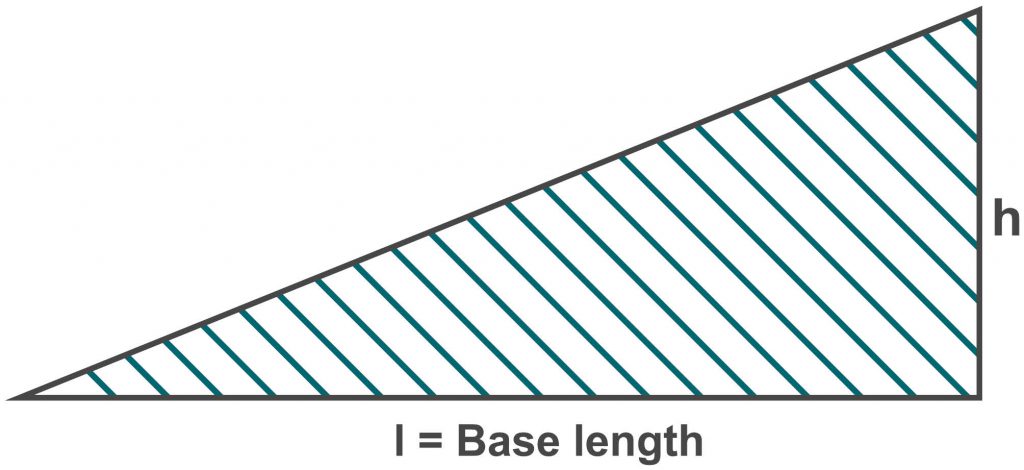
Slope (s) = Height difference (h) / Base of the inclined surface (l)
Forklift and pallet truck dimensions – vehicle width
The following rules apply when loading and unloading trucks, wagons or containers. The smaller the equipment width (b1) of the industrial truck, the faster you can turn and manoeuvre. In confined spaces, ‘slim’ vehicle dimensions of the forklift truck could save you valuable time. With narrow equipment, the fork carriage width (b3) usually corresponds to the overall width. However, you can still move a Euro pallet with these small industrial trucks.
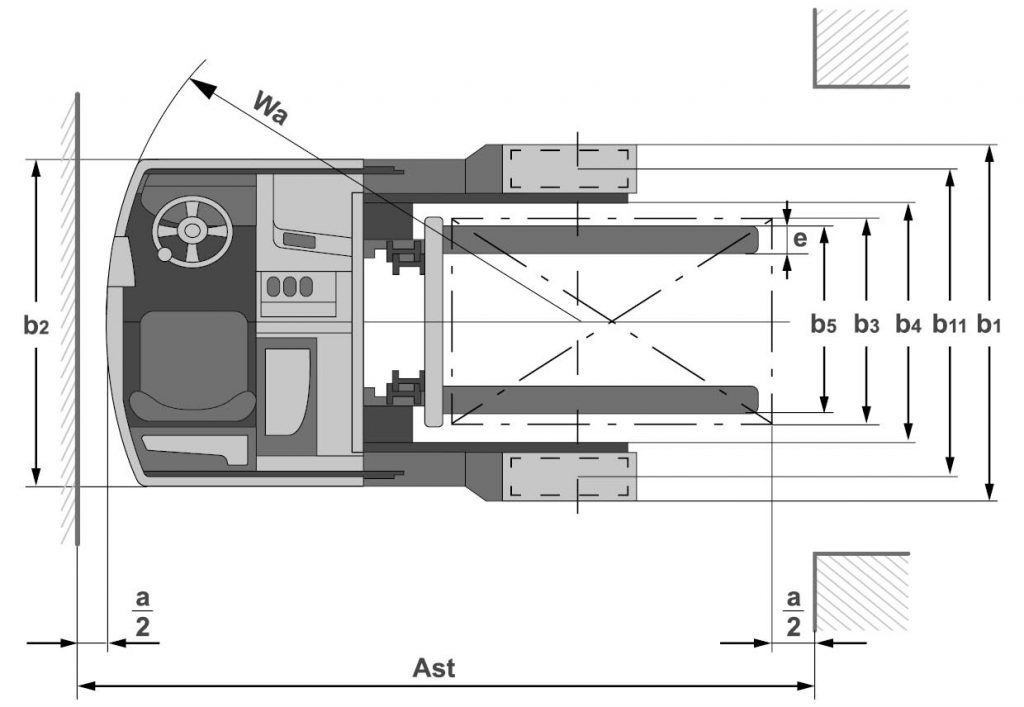
A wide vehicle requires more space when overtaking in gear. However, a wider track width (b10 front, b11 rear) generally offers better stability and more stable cornering. Large and bulky goods can be transported and stored comfortably with a wide forklift or pallet truck.
As the fork carriage is also further apart, heavy weights can be moved quickly and precisely in this way. However, if the weight of the goods to be handled is above the usual 2 to 2.5 tonnes, we recommend heavy-duty pallet trucks or heavy-duty stackers. With these forklift or pallet truck models, the dimensions are more generous and the constructive elements such as the lifting frame, the drawbar and the wheels are reinforced.
The standard forklift truck fork dimensions are only referred to as special fork widths from 685 cm. Up to a width of 60 cm, they correspond to the average, and a Euro pallet can still be transported with these dimensions.
Manoeuvrability and vehicle length
In order to get the most from your pallet or forklift truck, pay attention to the vehicle length (L2). This is mainly determined by its fork length. According to ISO standards, the fork length should be between 1150 and 2400 mm. If you transport your forklift or pallet truck or use goods lifts, short equipment dimensions are important as you need to be able to turn quickly and precisely in tight spaces.

In addition to the truck width (b1) and the turning radius (Wa), the front length of a truck determines the working aisle width requirement. The working aisle width is the distance between opposing storage units and is determined, among other things, by the type and model of truck. This generally depends on how much space is needed when turning and manoeuvring, as well as storing the vehicle. The manoeuvrability of the vehicle is also determined by the wheelbase (y). Although a small wheelbase shortens the turning radius, it also makes handling more difficult. This can lead to instability when cornering with a load.
You should also consider whether a three-wheel truck or a four-wheel truck is better suited to your needs. Three-wheel trucks are more manoeuvrable because they can be steered easily and quickly via a rear wheel. The required turning circle is almost the same as the vehicle length and is very small. Forklifts with four wheels, on the other hand, need more space to turn or manoeuvre.
Tare weight of forklifts and trucks
Lift truck tare weight represents the empty weight of a forklift or lift truck – without the payload or driver.
Effects of tare weight on ceiling load capacity
If lift trucks or forklifts are to be used on your premises, you need to check the ceiling load-bearing capacity of the subfloor. Especially in the case of multi-storey buildings, the structural analysis must be taken into account, particularly if the forklift is to be operated on upper floors. If several forklifts are in operation, the load on the floor increases. The maximum permissible ceiling load-bearing capacity (kg/m²) must not be exceeded. Ramps, mobile bridges or channel covers, for example, must also be taken into account, as these reduce the load-bearing capacity.
- Example calculation: The formula 2000 kg/m² means that an area of 1 m² may be loaded with a maximum load of 2000 kg.
As soon as forklifts or pallet trucks are loaded with goods, the total weight equals dead weight plus load weight. This means both the weight of lift trucks or forklifts on a surface and also vibrations, for example, when lowering loads or braking. For these dynamic forces, guidelines recommend an impact factor of 1.4 for counterbalance trucks.
The area is calculated from the vehicle dimensions of the forklift or lift truck: (length of the industrial truck + load length) x greatest width
Surface load (kg/m²) = (own weight kg + load kg) x impact factor 1.4
Length m x width m
Point loading on the floor
When using forklifts or pallet trucks, we recommend you pay attention to the condition of the floor. This is because the point load on the floor, or specific wheel pressure, is of particular importance for the floor covering. The specific wheel pressure acts on the ground via the tyre contact on surfaces and must be absorbed without deformation. This parameter is given in kg/cm². The tyre contact areas depend on:
- The material of the tyres
- The tare weight of the vehicle
- The weight of the transported load
- The dynamic influence when starting off
- When driving through curves and braking
There are a number of substrates that are critical in terms of point loading when working with industrial trucks:
- Wood
- Asphalt
- PVC and vinyl
- Tiles, clinker, ceramics
Here, a thorough suitability test for driving with industrial trucks is essential.
Please note: The regulations mentioned above represent only a selection of the most important legal requirements. Please refer to the listed organisations and directives for more detailed information. If in any doubt, consult experts or contact the relevant regulatory authorities.
Image source:
© gettyimages.de – 1933bkk

